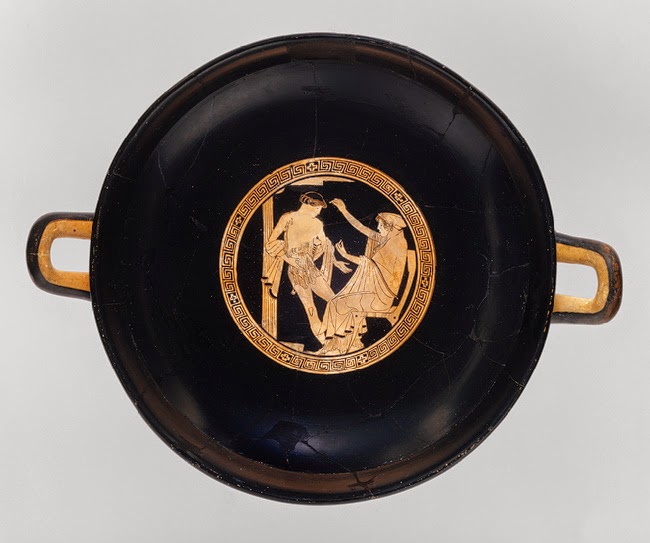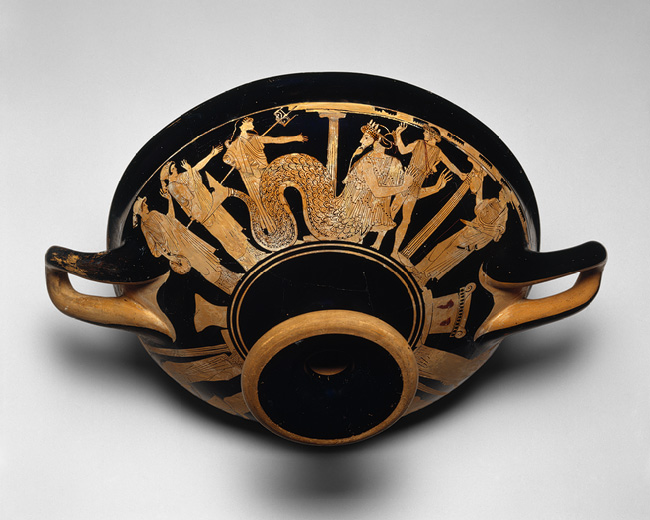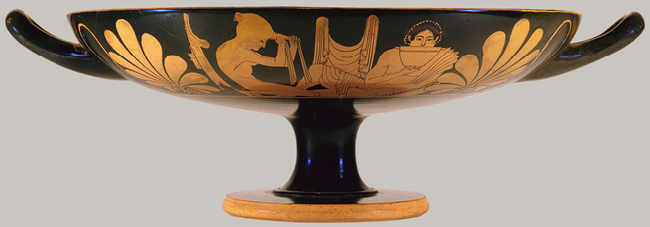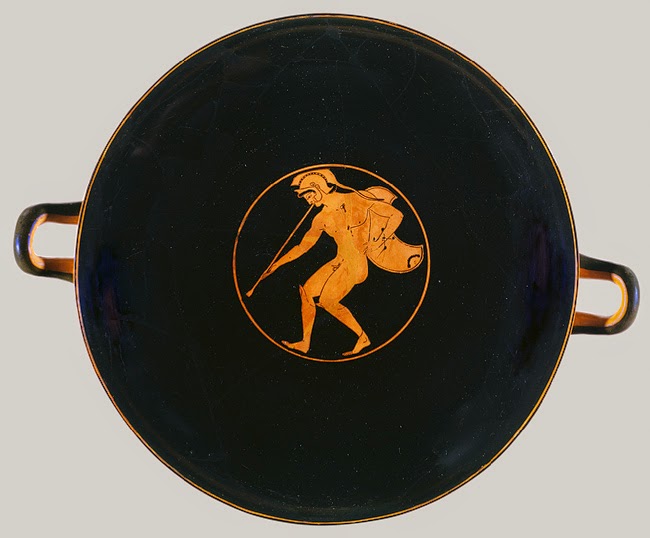You would probably not expect to find art at the bottom of wine cups, but that’s where you can see some of the earliest round paintings in the West, which were a major type of painted decorations in Ancient Greece around the 6th and 5th centuries BC.

 Briseis Painter, red-figure kylix (drinking cup), Theseus Arrives in Athens / Theseus in Poseidon’s Undersea Palace, c.480BC, Metropolitan Museum of Art, New York — Source: metmuseum.org
Briseis Painter, red-figure kylix (drinking cup), Theseus Arrives in Athens / Theseus in Poseidon’s Undersea Palace, c.480BC, Metropolitan Museum of Art, New York — Source: metmuseum.org
The kind of wine cup the Ancient Greeks used at drinking parties is known as a “kylix,” and it usually features a round painting at the bottom, as well as paintings on the outside, which are often about heroes and scenes from Greek mythology.
 C Painter, black-figure kylix, Heracles and Triton, c.570BC, British Museum, London — Photo by Marie-Lan Nguyen
C Painter, black-figure kylix, Heracles and Triton, c.570BC, British Museum, London — Photo by Marie-Lan Nguyen
 Douris Painter, red-figure kylix, Athena and Heracles, ca. 475 BC, State Collection of Antiques, Munich
Douris Painter, red-figure kylix, Athena and Heracles, ca. 475 BC, State Collection of Antiques, Munich
Other common topics include scenes from everyday life, especially music, drinking, and all kinds of celebrations.

 Ashby Painter, red-figure kylix, Symposium Scene / Trumpet, c.500BC — Source: metmuseum.org
Ashby Painter, red-figure kylix, Symposium Scene / Trumpet, c.500BC — Source: metmuseum.org
 Makron, Libation Scene, c.480BC, Louvre Museum, Paris — Photo by Marie-Lan Nguyen
Makron, Libation Scene, c.480BC, Louvre Museum, Paris — Photo by Marie-Lan Nguyen
The painted circular part at the bottom of this kind of cup is called a “tondo,” from the Renaissance Italian “rotondo,” which means “round.”
Because round paintings became very popular in the 15th century in Italy, the Italian word “tondo” was then used to refer to all round paintings as well round sculptures and reliefs, including those at the bottom of ancient wine cups used for drinking parties.
Yes, we can still learn much about ourselves by studying our roots. Thanks for the descriptive photos.
I couldn’t agree more. Thanks for your comment.
Pingback: Painting in Circles « the westologist